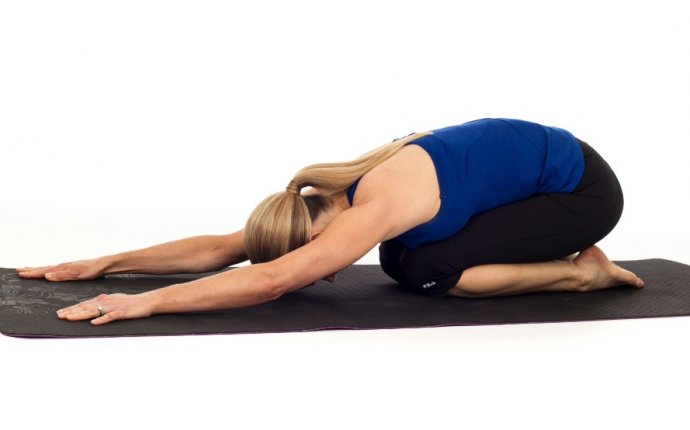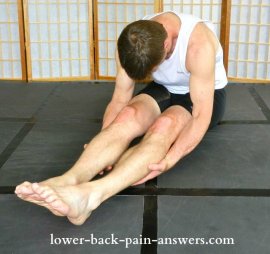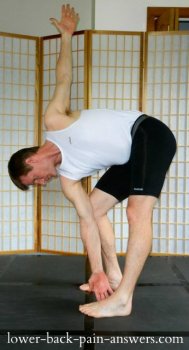
Lower back pain Hamstring Stretch

Why does stretching the hamstrings
relieve lower back pain?
Hamstring stretches are among the most important of all stretches to relieve lower back pain.
The reason?
Tight hamstrings can "fix" the bottom of the pelvis from normal free movement. This "fixing, " or lack of movement, can exert strain in the muscles of the lower back.
In addition, tight hamstrings can, in some cases, result in a torqued pelvis.
Have you ever sensed that when standing up you were crooked?
This is caused by an imbalance in the muscles of the back, pelvis, and legs. The role that tight hamstrings can play in causing and/or maintaining a crooked or torqued pelvis is considerable.
If one hamstring group is tighter and shorter on one side than the other, then your pelvis can become torqued.
If the hamstrings in both legs are short, it can fix the pelvis in a posterior rotation.
Why do so many hamstring stretching techniques fail?
Hamstring stretches come in many shapes and sizes but they are not all created equal.
If you've ever tried in earnest to stretch your hamstrings but just couldn't make any progress, here's why…
You've probably been using .
We've all heard that the "gold standard" of stretching is to hold a stretch for 30 seconds or longer. This is how static stretching is done.
The problem with this approach, especially for muscles that are extremely short and tight, is that it often triggers what's called the protective stretch reflex.
If you've ever held an intense stretch (or tried to!) for 20 or 30 seconds and you've felt a shaking or quivering in the muscle, then you've experienced the protective stretch reflex.
The protective stretch reflex is a stress response in the muscle during which the muscle braces for action. Instead of lengthening the muscle fibers, static stretching can actually bind the muscle in an effort to protect it!
Hamstring Stretches Using the Full-Body Mobilizer
I developed the Full-Body Mobilizer in order to provide individuals an workable hamstring stretching option that they could perform anywhere.
 Many of my clients especially love this technique because it's not only easy to do, but it's also extremely effective.
Many of my clients especially love this technique because it's not only easy to do, but it's also extremely effective.
And it not only stretches the hamstrings but also the torso and neck.
Why is Active Isolated Stretching so effective?
Active Isolated Stretching (AIS) is the most effective stretching technique I've discovered, especially for very tight and short muscles that have resisted all other attempts to be lengthened.
AIS works for the following reasons:
1. The stretch is only held for 2 seconds which means it does provoke the protective stretch reflex.
2. The antagonist of the muscle being stretched is active engaged which results in reciprocal inhibition of the muscle being stretched.
3. The stretches are done without the muscle being stretched bearing weight. If a muscle is bearing weight while it is being stretched (such as is the case with certain standing hamstring stretches), the muscle is actually eccentrically contracted. This is not an optimal state to try to lengthen muscle fibers.
Why do I need to be careful about overstretching locked long hamstrings?
Have you ever tried to stretch the hamstrings of one leg because that side felt particularly, naggingly tight? But all attempts at stretching seemed to just aggravate the muscle?
If so then you may have experienced hamstrings that are "locked long."
When the pelvis becomes torqued so that one side is rotating in one direction and the other side is rotating in the other direction, the hamstrings will be locked short on one side and locked long on the other.
Picture a rubber band that's been pulled so taut that over time the rubber band begins to fail. This is a pretty good approximation of what's happening when your hamstrings are locked long.
In a case such as this, it's essential to see an experienced hands-on therapist such as a Rolfer or a Neuromuscular Therapist in order to create the pelvic imbalance.
In the meantime, it's best to concentrate on lengthening the other hamstrings even though they might not seem as tight.









